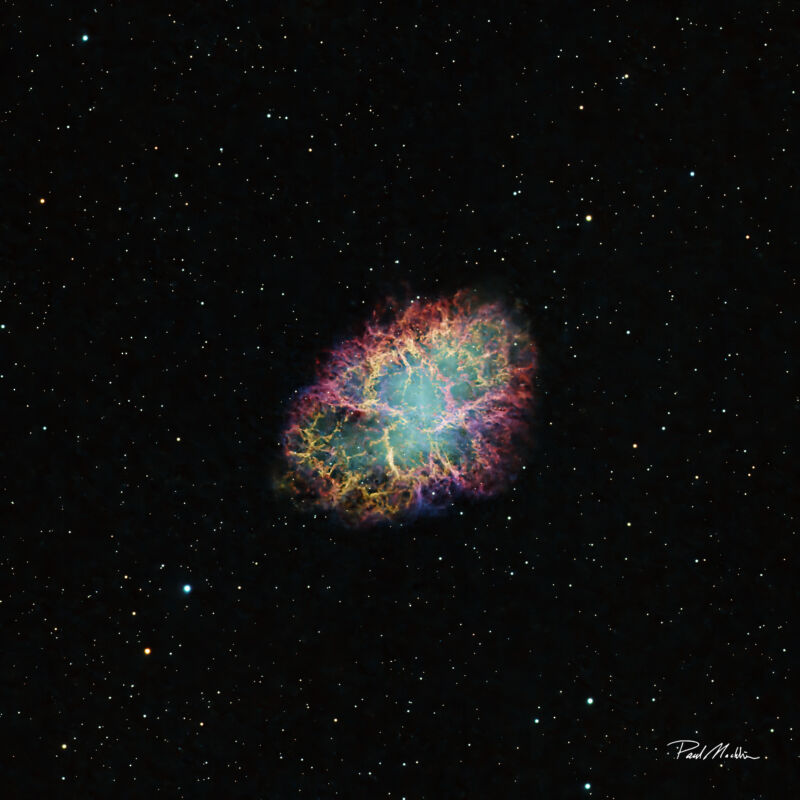
Enlarge / The Crab Nebula in all its glory.
Paul Macklin
Welcome to the Daily Telescope. There is a little too much darkness in this world and not enough light, a little too much pseudoscience and not enough science. We’ll let other publications offer you a daily horoscope. At Ars Technica, we’re going to take a different route, finding inspiration from very real images of a universe that is filled with stars and wonder.
Good morning. It’s January 5, and today’s photo reveals the Crab Nebula in all of its glory.
This object, known more formally as Messier 1 or M1, earned its colloquial name when Anglo-Irish astronomer William Parsons observed and drew this object in the early 1840s. It looked something like a crab with arms, and the appellation stuck. The nebula had been discovered about a century earlier by English astronomer John Bevis.
The nebula is actually a supernova remnant from a star that was observed popping in 1054 and recorded by Chinese astronomers. That must have been quite a sight, because the supernova occurred only about 2,000 light-years from Earth, which is relatively close as these things go. It likely was as bright as Venus and visible during daylight hours for a few weeks.
This image was captured by amateur astronomer Paul Macklin in Indiana. And it’s quite spectacular.
Source: Paul Macklin
Do you want to submit a photo for the Daily Telescope? Reach out and say hello.